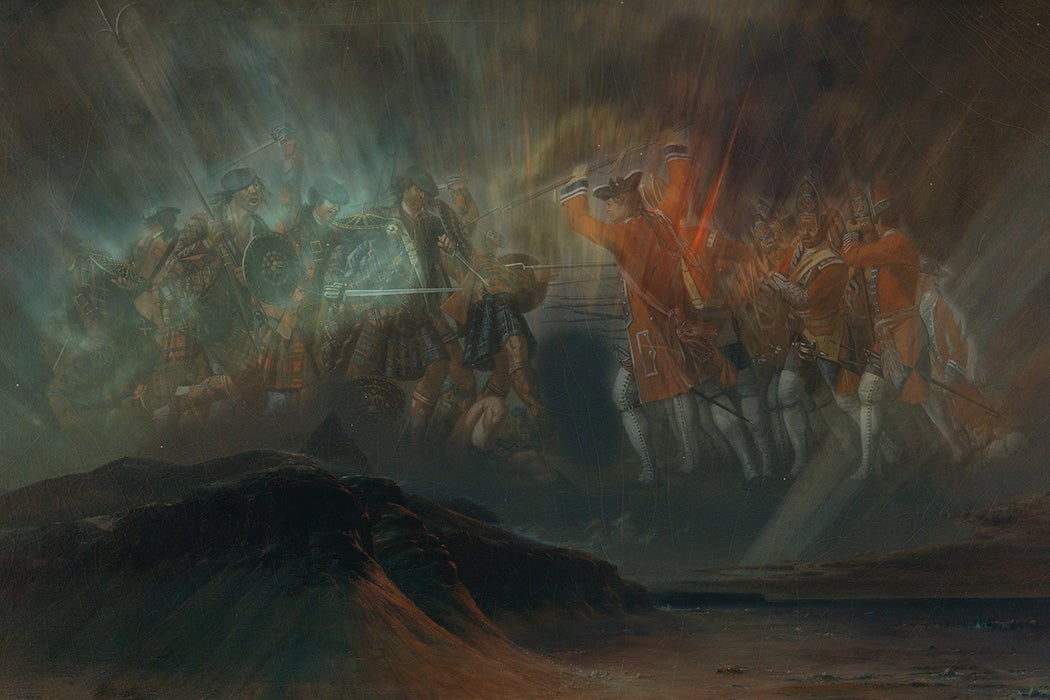On the night of March 6, 1716, people all over England witnessed a bloody war unfolding in the sky. Some claimed the battles were so fierce they could smell the gunpowder. Others saw flaming swords hanging in the air like Macbeth’s dagger.
Even in the dead of night, the aurora was bright enough to read by. Sometimes the sky looked like a shattered mirror, with cracks of light running through it; at other moments the air seemed to be full of tumbling flakes of fire. To many, it seemed like the end of the world.
“On Tuesday last,” one observer wrote, “about a Quarter before 7 in the Evening, one of my Servants came to me in a great Fright; and begg’d of me to come out immediately, for there were Two Armies fighting in the sky.” He rushed outside, only to find “a most Glorious Light, appearing thro’ the Intervals,” which was “Continually in Motion… sometimes Two different Lights came with great seeming Fury against each other; and having met together, each roll’d gently back, like two Waves that have dash’d themselves in their Opposition.”
That quote captures one of the oddest things about the 1716 aurora: people around the country gathered to witness the scene, but although they all stared up into the same sky, they interpreted what they saw in dramatically different ways. Some saw supernatural soldiers slaughtering each other in the air. Others saw simply a natural oddity, a particularly vivid version of the Northern Lights.
Among the second group was the astronomer Edmond Halley, who attempted to use the latest theories of magnetic effluvia to explain the eerie phenomena. But as he jotted down his observations, the spectators around him were making sense of the apparitions using their own reference points:
Some likened it to that Representation of Glory wherewith our Painters in Churches surround the Holy Name of God. Others to those radiating Starrs wherewith the Breasts of the Knights of the most Noble Order of the Garter are adorned. Many compared it to the Concave of the great Cupola of St. Pauls’ Church, distinguisht with Streaks alternately Light and obscure, and having in the middle a Space less bright than the rest, resembling the Lantern.
Church vaults, flaming swords, glowing waves: the splatter of light and color seemed to demand interpretation. It is no wonder, then, that so many people saw soldiers on the march. By doing so, they were taking part in a long-standing tradition, one that dates back to the Bible. Consider 2 Maccabees 5:
[I]t came to pass that through the whole city of Jerusalem for the space of forty days, there were seen horsemen running in the air, in gilded raiment and armed with spears, like bands of soldiers. And horses set in order by ranks, running one against another, with the shakings of shields, and a multitude of men in helmets, with drawn swords, and casting of darts, and glittering of golden armour, and of harnesses of all sorts. Wherefore all prayed that these prodigies might turn to good.
Similar sightings proliferate throughout the popular literature of the early modern era. In 1659, one pamphlet reported a great march of warlike troops through the sky, accompanied by drums and trumpets. Another, in 1673, attested that the whole town of Posen had witnessed brigades clashing above their heads, punctuated with blasts of cannon-fire and screams.
Weekly Newsletter
To the pamphleteers, these apparitions were omens, legible signs of God’s will. And they did not have to look far for the meaning of the 1716 aurora. Only a few days before, the Earl of Derwentwater had lost his head, in punishment for a failed uprising against the King. His body was interred on March 6, the day of the aurora. These celestial phenomena quickly became known as “Lord Derwentwater’s Lights.” To his supporters, the visions of armies in the sky were a clear message of God’s wrath at the Earl’s execution.
But to Francis Dunn, an old servant of Lord Derwentwater’s, the apparitions in the sky did not suggest flaming swords or marching battalions. As he recorded in his diary:
…[a] most Beautiful glory appeared over ye hearse, wch all saw, sending forth resplendent streams of all sorts of colours to ye east & west, the finest yt ever I saw in my Life. It hung like a delicate rich curtain & continued a quarter & half an hour over ye hearse.







